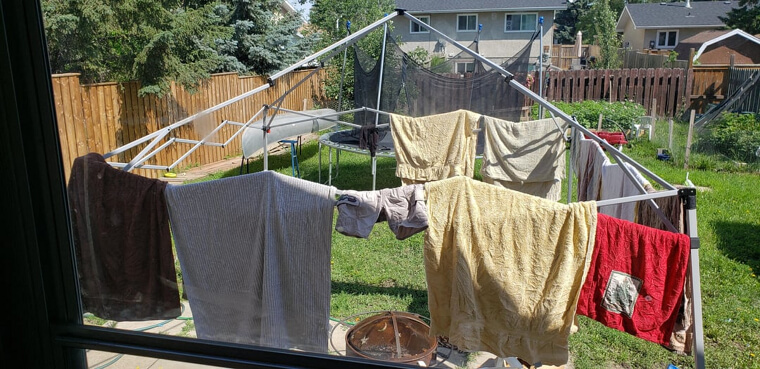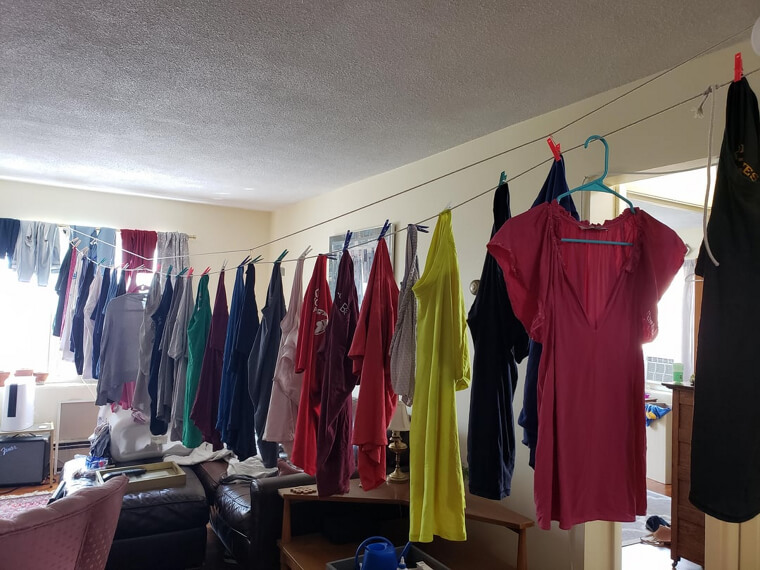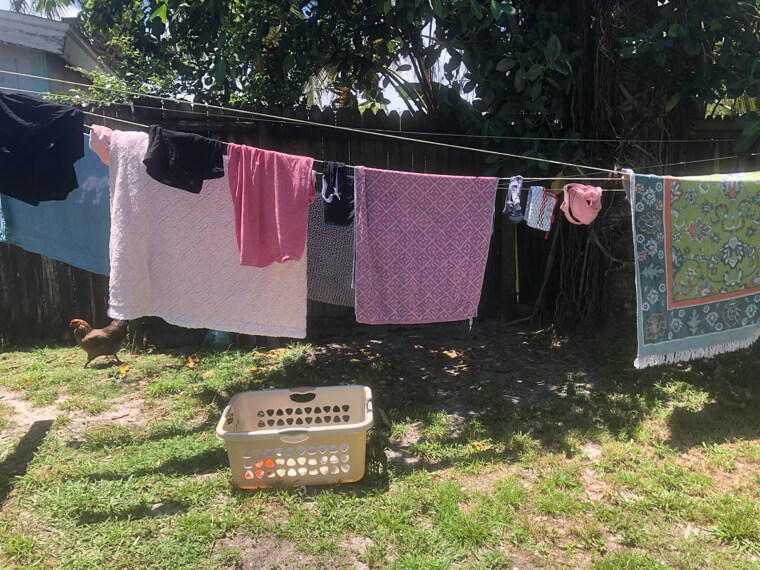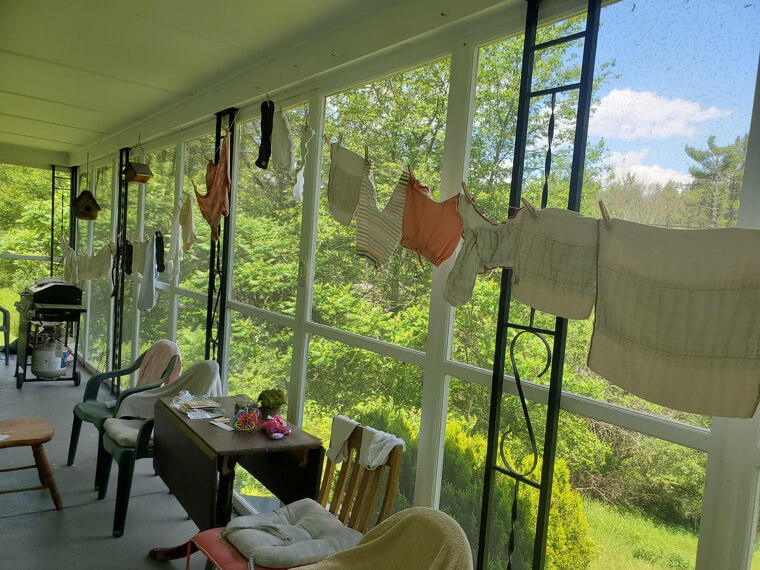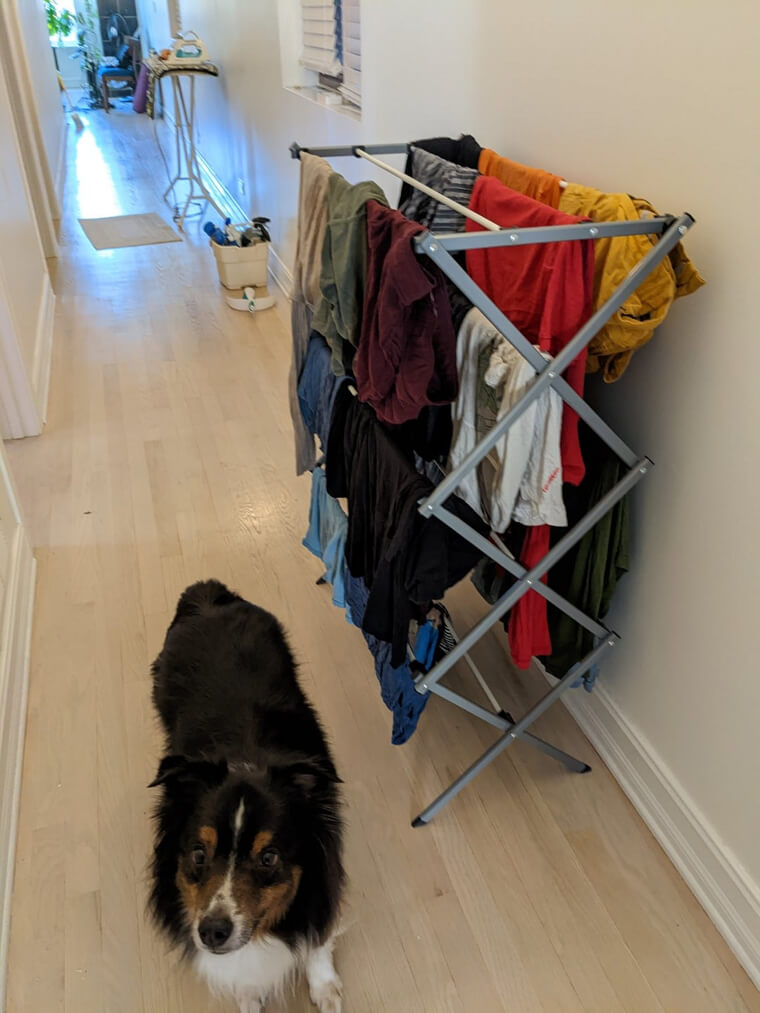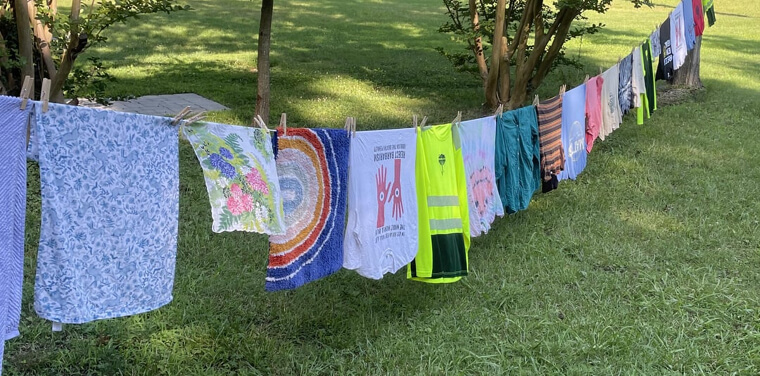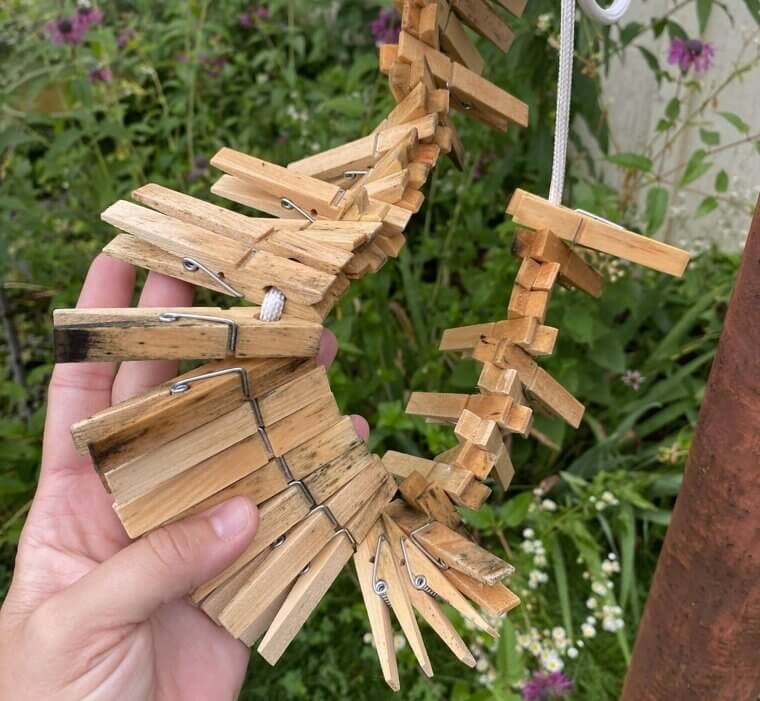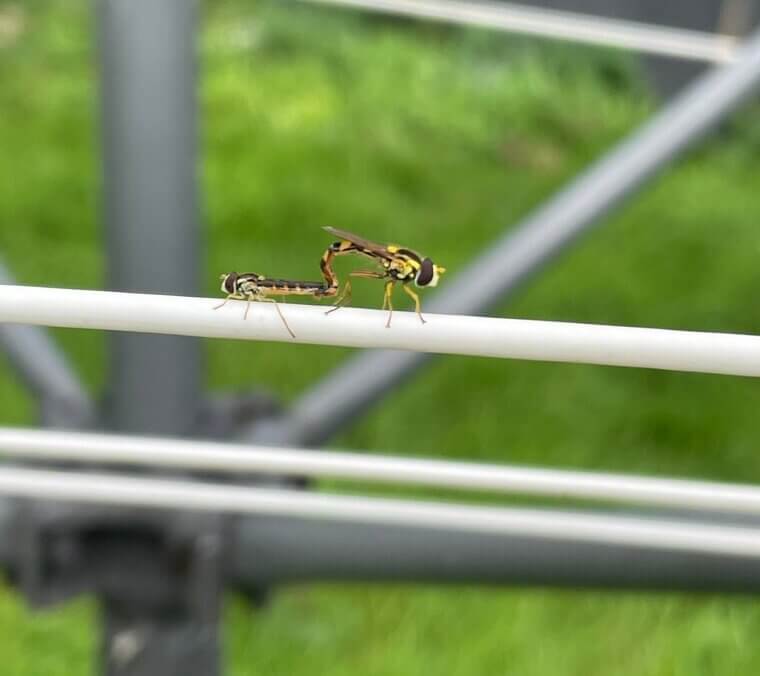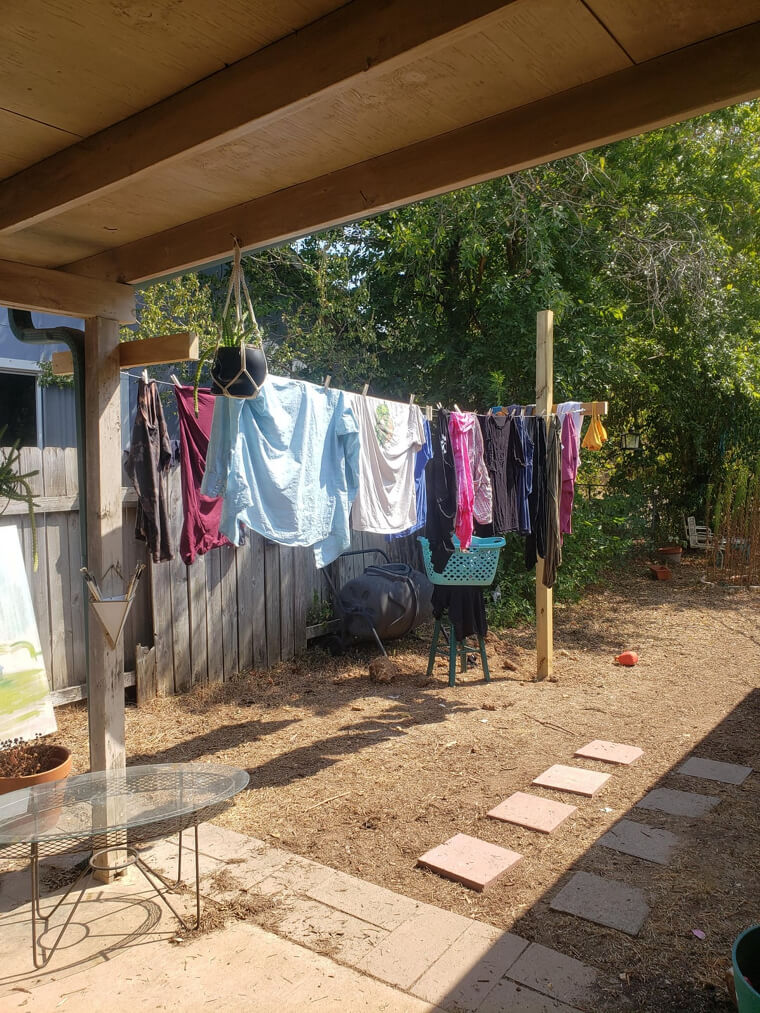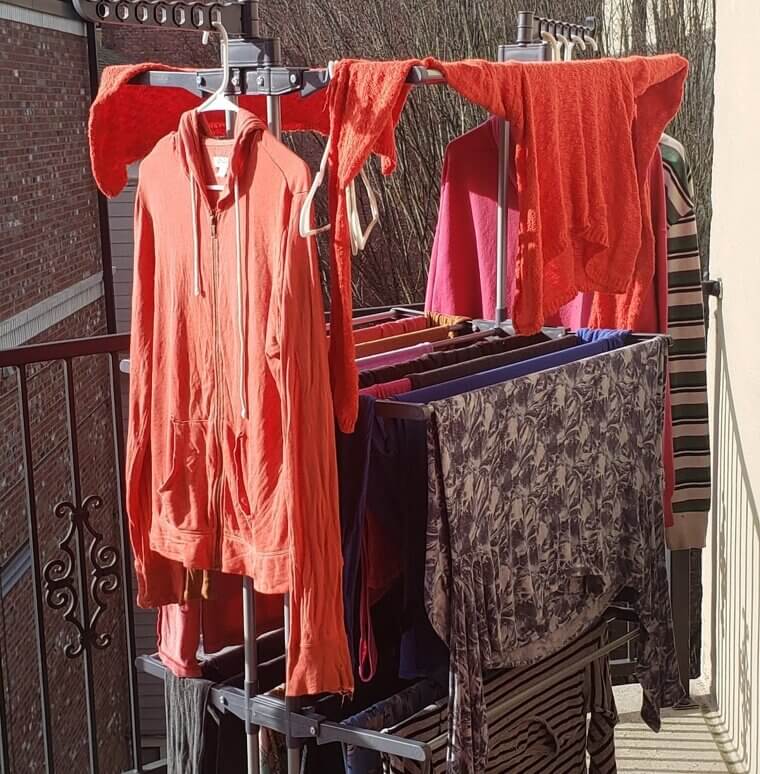Electricity Savings Are Real but Not Always Dramatic
Dryers eat electricity like nobody’s business, which is why line drying sounds like a financial miracle. And yes, the savings do show up on your energy bill, especially if you dry several loads a week. The issue is scale. If your laundry load is modest, the savings are solid but not life changing. Older readers who grew up without automatic dryers often remember how natural air drying felt, but modern expectations create sticker shock when people realize the dryer accounts for only part of their utility bill. Air drying saves money, but it does not turn your budget upside down. Still, the numbers are encouraging. In households with kids, pets, or piles of laundry, ditching the dryer even part time can trim monthly expenses in a noticeable way. It is not a giant windfall, but it is a dependable reduction in energy use that adds up over time.
Line Drying Slows Wear and Tear on Clothes
Dryers do more than use electricity. They rough up fabric, shrink shirts, loosen elastic, and fade colors faster than air drying ever will. That gradual damage shortens the lifespan of your clothes, which leads to more spending on replacements. Line drying avoids the heat and friction, keeping clothing in better condition for longer. For anyone who buys quality garments or wears pieces repeatedly, the long term savings can easily surpass what you save on electricity. Older audiences understand this instinctively because line drying used to be standard. A well cared for wardrobe lasts longer, which means fewer trips to replace favorites. Even cutting dryer use in half extends clothing life noticeably. People rarely include wardrobe longevity when calculating the savings, but for many households, this is where the real money stays in the pocket.
The Outdoor Smell Trick Hides Small Costs
Many people swear that line dried laundry smells better, almost as if sunshine itself has a fragrance. While that part is delightful, outdoor drying can introduce some hidden costs. Clothes left outside pick up pollen, dust, and sometimes unexpected gifts from birds. That means rewashing certain items. If you live in a humid region, line drying can take hours, and you may find yourself running a quick dryer cycle to finish the job anyway. For people with allergies, air drying outdoors can even require extra detergent or additional rinses. These small complications do not eliminate the savings, but they soften them. The fresh outdoor smell is appealing, but the weather and environment have opinions about your laundry too. The charm is real. The savings just need realistic expectations.
Weather Becomes Part of Your Budgeting
Line drying relies on cooperation from the sky. Rain delays your laundry. Wind blows things off the line. Cold weather turns clothes into stiff, frozen shapes that resemble modern art. All of this affects your time and sometimes your money. If bad weather forces you to run the dryer more often, your annual savings shrink. People who live in sunny climates benefit most, while those in rainy regions end up juggling forecasts like meteorologists. Older readers who line dried for decades often remember checking the sky before starting laundry. Weather becomes a scheduling factor, and schedules have value. The more your routine relies on reliable sunlight, the more predictable the savings become. If you live somewhere with four seasons, the math changes every few months.
Indoor Drying Racks Help, but Come With Trade Offs
Indoor drying racks solve the weather problem, but they create others. Moisture builds up indoors, which can increase utility costs if you need fans or dehumidifiers. Clothes also take longer to dry inside, especially in winter. That time gap encourages people to still use the dryer occasionally. In small homes, racks block walkways or crowd rooms, which can cause frustration and lead to shortcuts that involve the dryer. Indoor drying absolutely saves money, but it can shift the inconvenience instead of eliminating it. The trick is figuring out whether the slower drying process is worth the smaller utility bill. Many people find a hybrid method works best, but the savings depend on a balance that does not interrupt daily life.
Heavier Items Change the Math
Towels, jeans, blankets, and hoodies do not dry the same way T shirts do. Heavier items take far longer, which can lead to mildew if left too long in humid conditions. Some people end up partially drying heavy loads in the dryer before finishing them on the line, which reduces the overall savings. Others decide it is not worth the effort and toss everything into the dryer anyway. For households with large amounts of heavy laundry, the line drying advantage shrinks. Light items dry fast and efficiently. Heavy ones test your patience and your willingness to chase the last bit of dampness. The savings are still there, but they depend heavily on your collection of laundry weights.
Hidden Supplies Cost Money Too
Clothespins, ropes, racks, and replacement lines do not cost much, but they are not free. Over time, you buy new clips, replace damaged lines, and invest in sturdier racks if the cheap ones do not survive. These costs are small, but they nibble at the savings. People often forget about them until they need maintenance. For households committed to long term line drying, these supplies become part of the annual budget. They are still far cheaper than electricity, but it is worth acknowledging their existence. The savings remain intact, but they are not entirely effortless.
Bugs Occasionally Complicate the Plan
Drying clothes outside feels wholesome until insects get involved. Bees investigate floral detergents. Ants explore damp hems. Spiders occasionally decide a sleeve is the perfect place for a quick web. None of this is catastrophic, but it does lead to extra shaking, rewashing, or the occasional decision to toss things into the dryer just to be safe. These small interruptions reduce the predictability of line drying. The savings are still real, but the annoyance factor can chip away at enthusiasm. Older adults who grew up with clotheslines often have plenty of stories about unexpected wildlife encounters. These moments are memorable, but they are not exactly money savers.
Line Drying Demands More Time
Time is a cost that rarely appears on a bill, but it matters. Hanging clothes takes longer than tossing everything into a dryer. Collecting them afterward takes time too. For people with flexible schedules, this is manageable. For those with tight routines, line drying becomes a chore that may not feel worth the savings. Many modern households rely on quick turnaround laundry. Air drying slows that rhythm and requires planning. The money saved from electricity is undeniable, but the time investment creates a trade off. Whether that trade off feels worth it depends on your lifestyle and patience level.
The Savings Are Real, but the Lifestyle Matters
Line drying absolutely saves money, extends the life of clothes, and reduces energy use. But the total benefits depend heavily on your climate, home size, laundry habits, and willingness to deal with slower routines. For some households, the savings are significant. For others, the inconvenience outweighs the gain. It is not a miracle solution, but it is a reliable way to lower bills when used consistently. The key is not expecting line drying to transform your budget overnight. It works best as a steady, practical habit that quietly reduces costs across the year.

